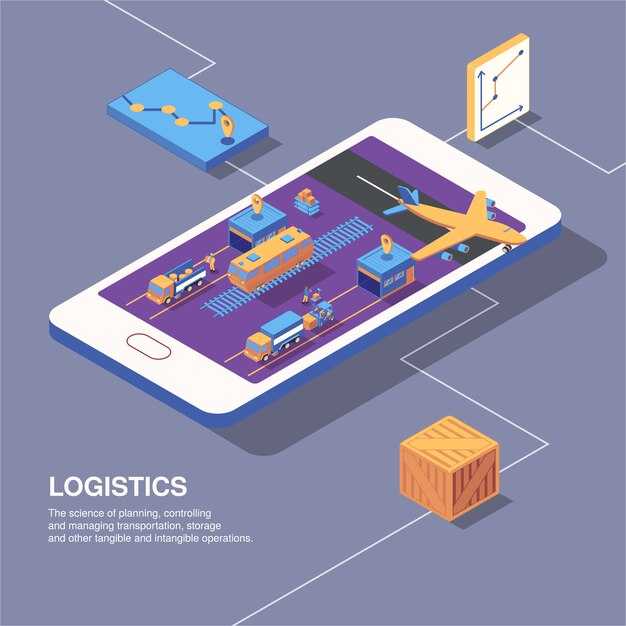Next-gen freight platforms for European carriers emerge as a response to fragmentation, legacy systems, and strict regulatory expectations. These platforms stitch planning, execution, and settlement into a unified workflow, powered by cloud-native architectures, real-time data streams, and gépi tanulás driven optimizations.
A címen end-to-end visibility és dynamic decision support, carriers can proactively manage capacity, routes, and carrier mix. Cross-border corridors become more predictable as sensors, trackers, and telematics feed a single operating picture, enabling rapid response to disruptions.
Key capabilities include multimodal orchestration, automated tendering, digital documentation, és secure settlement; all anchored by open APIs és data governance to protect sensitive information.
The impact is measured in efficiency, reliability, and sustainability: higher asset utilization, reduced empty miles, faster invoicing, and a lower carbon footprint across European supply chains. Standardized data models és interoperable platforms unlock scalable collaboration among shippers, transport providers, and 3PLs.
Successful adoption requires clear governance, robust security, and a phased migration from legacy systems to platform-native workflows. Building an open, trusted ecosystem across Europe will hinge on common standards, regulatory alignment, and a vibrant marketplace of interoperable services.
Real-Time Visibility and ETA Accuracy Across European Corridors

Real-time visibility across European corridors requires a unified data fabric, low-latency data streams, and predictive algorithms that deliver accurate door-to-door ETAs.
Core data sources include fleet telematics and GPS trackers, TMS/ERP integrations from shippers and freight forwarders, port and border terminal feeds, rail pool and container tracking systems, customs and regulatory data, weather and road-traffic feeds, and incident reports.
Data quality and timeliness are critical. Timestamp alignment across streams, data validation, deduplication, and fault-tolerant fusion are mandatory. When data is missing or delayed, the system should default to probabilistic estimates with clearly bounded uncertainty.
ETAs are generated per leg and then composed into an end-to-end forecast. Models incorporate dwell times at origin yards and hubs, port/terminal handling times, cross-border clearance, transshipment delays, and variability in rail and road segments. Output is a probabilistic ETA with a confidence window (for example, a 60–90% probability) rather than a single point.
Corridor-specific constraints: Rhine-Alpine faces multi-country customs and complex rail interchange. North Sea-Baltic and Atlantic corridors encounter port congestion and weather. The Mediterranean and Iberian corridors involve gauge changes, inland hubs, and seasonal demand. European corridors often require dynamic rerouting and intermodal handoffs.
Operational enhancements: real-time visibility enables proactive exceptions, automated re-planning, and customer-facing ETAs with percentile ranges. Carriers can reallocate capacity, adjust routes, and communicate revised ETAs to customers via API or portal.
Interoperability and standards: a platform must support APIs and event streams for real-time updates, with a common data schema and reference data for locations, commodities, and assets. Data privacy and consent controls must align with GDPR; access is role-based; data minimization applied.
Implementation approach: start with core corridors and high-volume lanes, partner with major ports and rail operators, invest in data enrichment (weather, incidents), and measure KPIs. Use a modular microservices architecture, with event-driven processing and scalable compute.
KPIs to track include end-to-end ETA accuracy (on-time versus forecast), ETA confidence interval tightness, percent of shipments with real-time visibility, dwell time reductions, and alert-response time. A strong visibility platform improves customer trust and SLA adherence.
Conclusion: Real-time visibility and accurate ETAs across European corridors are attainable through data integration, probabilistic forecasting, and cross-border collaboration. A Next Gen Freight Platform that harmonizes multi-source data and provides actionable insights yields significant competitive advantage for European carriers.
Automated Cross-Border Compliance and Digital Documentation Workflows
Automated cross-border compliance and digital documentation workflows integrate regulatory intelligence with document generation to streamline European freight operations. A Next Gen Freight Platform continuously monitors regulatory developments across the European Union, the United Kingdom, and neighboring trading partners, translating rules into machine‑executable checks embedded in every shipment workflow. Shipments are automatically classified, restricted items flagged, and controls applied before dispatch. With centralized rule management and language‑neutral data models, carriers can scale complex multi‑country networks while maintaining consistent compliance posture and audit readiness.
Compliance rules engine and data enrichment: The platform ingests tariff codes, origin and destination data, special permits, sanctions lists, and safety requirements (ADR, dangerous goods). It validates HS codes, VAT regimes, EORI numbers, and license prerequisites in real time. If a shipment requires pre‑clearance or a specific permit, the system triggers automated alerts, routes documents to the appropriate authority portals, and schedules submission. Regular regulatory feed updates and versioned rule sets ensure changes in customs tariffs, declarant obligations, and origin rules are applied retroactively where needed.
Digital documentation workflows: The core workflow automates creation, validation, signing, and exchange of documents such as commercial invoices, packing lists, certificates of origin, customs declarations, and transit or export/import declarations. Electronic bills of lading, eCMR, eULD where supported, and electronic waybills are generated and distributed to stakeholders. Pre‑arrival and export pre‑submission modules push data to customs and carriers ahead of door‑to‑door movement, enabling faster clearance and reduced dwell times.
Standards, interoperability, and data integrity: The platform uses GS1 and UN/CEFACT data standards, supports EDI and API exchanges (including PEPPOL for public procurement data, and common customs portals), and exchanges structured JSON or XML documents. Data quality gates enforce mandatory fields, standardized unit codes, and consistent product classifications. Version control, digital signatures, and tamper‑evident logging provide an auditable chain of custody from original document to final clearance.
Risk management and proactive remediation: Automated risk scoring flags high‑risk consignments based on origin, carrier compliance history, consignee integrity, or incorrect documentation. The system orchestrates remediation workflows: re‑submission, additional certificates, or route changes to avoid border delays. Real‑time status updates, reminders, and escalation paths keep operations aligned with carrier SLAs and customer expectations, while dashboards offer compliance metrics and exception trends.
Digital signatures, traceability, and data security: Documents are digitally signed by authorized parties, with immutable audit trails and timestamping. Access controls and encryption protect sensitive data in transit and at rest, and data processing adheres to GDPR and local privacy laws. Complete version histories enable rollbacks and forensic analysis in audits, while role‑based permissions prevent unauthorized changes to compliance data.
Operational benefits and practical outcomes: Automated cross‑border workflows reduce manual data entry, standardize document formats, and shorten clearance cycles. Carriers achieve lower detention and demurrage costs, improved cash flow through faster invoicing and release times, and higher on‑time performance. The platform supports multi‑modal routes, TIR/ carnet workflows, and dynamic routing based on current regulatory status, external advisories, and port congestion.
Implementation considerations and best practices: Successful deployment requires clean master data, high‑quality supplier and partner onboarding, and continuous regulatory intelligence feeds. Establish governance for rule versioning and change management, invest in staff training for exceptions handling, and implement fallback processes for offline scenarios. Start with a minimum viable compliance model for core borders, then progressively extend to new territories, ensuring end‑to‑end visibility for shippers, carriers, and customs authorities.
API-First Onboarding, Billing, and Intermodal Route Optimization

An API-first onboarding flow enables European carriers to register, onboard devices and services in minutes. Providers offer a self-serve developer portal with a versioned OpenAPI spec, sandbox credentials, and ready-made client libraries. Carriers authenticate using OAuth 2.0 or API keys, create application profiles, establish role-based access, and automatically receive entitlements for routes, equipment types, and data streams. The process includes automated KYC/AML checks aligned to EU requirements, test shipments, and a robust sandbox with synthetic data to validate integration before production.
Data models and reliability are centralized through a unified schema that covers carrier profiles, equipment, services, lanes, schedules, and tariffs. All APIs are versioned to prevent breaking changes, and operations are designed to be idempotent with clear retry guidance. Event-driven webhooks keep downstream systems synchronized, and explicit data contracts define required fields, units, and time zones. The platform guarantees SLA-backed uptime, multi-region availability, and strong encryption for data in transit and at rest.
Billing architecture supports multiple monetization schemes: subscription access to APIs and data feeds, usage-based charges for route computations or data volumes, and hybrid models for enterprise arrangements. Usage meters expose transparent metrics such as API calls, optimization runs, data transfers, and shipment events. Invoicing supports multi-currency and EU VAT handling, with automatic or portal-driven generation. Payment methods include cards and bank transfers, and invoices can integrate with ERP systems or PEPPOL-ready e-invoicing workflows.
Intermodal route optimization models multi-modal networks that span road, rail, sea, and inland waterways across Europe. The engine minimizes total landed cost while honoring service levels, time windows, equipment compatibility, driver regulations, rail and port constraints, and transfer times. It accounts for capacity limits, dwell times, and slot availability, with dynamic disruption updates. Scenarios, sensitivity analysis, and look-ahead planning produce a ranked set of itineraries with ETA and reliability scores, fed by live data such as traffic, rail timetables, port congestion, and weather.
API design and workflows expose endpoints for onboarding, billing, and planning. Route search accepts origin, destination, time windows, service levels, and preferences; planners return multiple plans with scoring. Plan generation can be asynchronous, followed by webhook notifications, and accepted plans can be modified or canceled. Webhooks deliver status changes, price updates, and disruption alerts. Data export in JSON or CSV and integration hooks for TMS and ERP systems enable seamless operational deployment.
Governance, security, and compliance enforce GDPR alignment, with explicit data residency options and comprehensive audit logs. Role-based access control, TLS encryption in transit, and encryption at rest protect sensitive information. Versioning and deprecation policies maintain backward compatibility, while sandbox testing reduces production risk. Operational dashboards provide SLA metrics, error rates, and usage reports for finance and compliance teams.
Impact and outcomes include accelerated onboarding times, improved billing accuracy, and higher process transparency. Automated onboarding and consolidated intermodal data reduce manual work, while optimization lowers total cost of ownership and improves asset utilization. Real-time risk scoring and disruption alerts support proactive decision-making, delivering greater reliability and sustainability across European carrier networks.

 Next Gen Freight Platforms for European Carriers">
Next Gen Freight Platforms for European Carriers">
